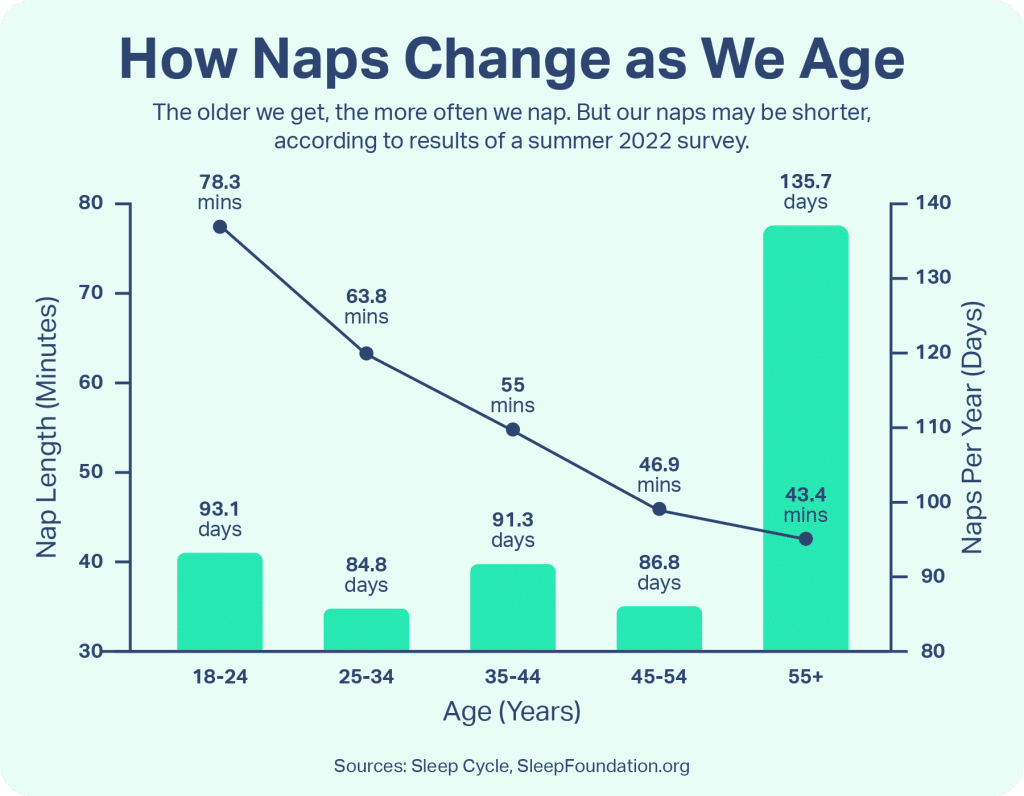Napping during the day: a blissful rejuvenation or a sleep-stealing culprit? As the sun reaches its zenith, some of us may feel a sudden urge to retreat to the comforts of our bed, seeking solace in a midday siesta. But does indulging in this tempting escapade of sleep impact our slumber under the moonlight? In this article, we explore the relationship between daytime napping and nighttime sleep, uncovering the secrets behind this age-old dilemma.
Review contents
The Science of Sleep
Understanding Sleep Cycle
Sleep is a vital process that plays a crucial role in maintaining our overall health and well-being. The sleep cycle consists of different stages that repeat throughout the night, each serving its own purpose. The sleep cycle can be divided into two main categories: non-rapid eye movement (NREM) sleep and rapid eye movement (REM) sleep. NREM sleep is composed of several stages, including light sleep, deep sleep, and dreaming sleep, whereas REM sleep is the stage associated with vivid dreams. Understanding the sleep cycle is essential in comprehending the impact of daytime napping on nighttime sleep.
Importance of Quality Sleep
Quality sleep is essential for our physical and mental health. It helps our body repair and rejuvenate, while also enabling our brain to process information and consolidate memories. Sleep deprivation has been linked to a wide range of health problems, including increased risk of chronic conditions like obesity, diabetes, and cardiovascular disease. It also impairs cognitive function, mood regulation, and immune function. Therefore, ensuring we get sufficient and quality sleep is vital for our overall well-being.
Factors Affecting Sleep Quality
Various factors can influence the quality of our sleep. These factors include physical and mental health conditions, lifestyle choices, and environmental factors. Chronic pain, anxiety, depression, and sleep disorders can disrupt our sleep patterns and result in poor sleep quality. Additionally, factors such as noise, light exposure, and uncomfortable bedding can also affect our ability to sleep soundly. It is important to address these factors and create optimal conditions for quality sleep.
Daytime Napping
Definition and Types of Naps
Daytime napping refers to the practice of taking a short period of sleep during the daylight hours. Naps can vary in duration and purpose, with different types of naps serving different needs. Power naps, for example, are short naps typically lasting around 10 to 20 minutes and are designed to boost alertness and productivity. Longer naps, on the other hand, can range from 30 minutes to 90 minutes and provide more extensive physical and mental rest.
Reasons for Daytime Napping
People engage in daytime napping for various reasons. Some individuals may take naps to combat sleepiness and enhance their alertness during the day. Others may nap to improve their cognitive function or creative thinking. Napping can also be a way to alleviate fatigue, relieve stress, or recharge before engaging in mentally or physically demanding tasks. The reasons for daytime napping can vary from person to person, and it is important to understand the potential benefits and drawbacks.
This image is property of sleepsmug.com.
Benefits of Napping
Increased Alertness
One of the primary benefits of napping is increased alertness. A well-timed nap can revitalize our energy levels and enhance our cognitive performance. By providing a brief period of rest, napping allows our brain to recharge and improve our overall alertness, making us more productive and focused throughout the day.
Improved Cognitive Function
Napping has been shown to improve cognitive function by enhancing memory consolidation and information processing. During sleep, our brain organizes and stores newly acquired information, strengthening neural connections and promoting learning. By taking a nap, we can facilitate this process and improve our ability to retain and recall information.
Enhanced Mood and Creativity
Napping can also positively impact our mood and creativity. When we are tired, our mood can be negatively affected, leading to irritability and decreased motivation. By taking a nap, we give our mind and body a chance to relax, which can result in improved mood and increased creativity. Naps can provide a refreshing break from the stresses of the day, allowing us to approach tasks with a more positive mindset.
Physical Revitalization
Napping can also provide physical rejuvenation. Resting our bodies and giving our muscles time to relax can alleviate physical fatigue and improve our overall sense of well-being. Additionally, napping has been associated with a decrease in blood pressure and stress hormone levels, which can contribute to better cardiovascular health.
Stress Reduction
Taking regular naps can be an effective strategy for stress reduction. By allowing ourselves time to rest and relax, we can alleviate physical and mental strain. Napping can help lower cortisol levels, the hormone associated with stress, and promote a sense of calmness and relaxation. This can have a significant impact on our overall stress levels and improve our ability to cope with daily challenges.
Napping Duration and Timing
Ideal Nap Length
The ideal nap length can vary depending on individual preferences and schedules. Short power naps, lasting around 10 to 20 minutes, are often recommended to boost alertness and prevent grogginess upon waking. These short naps help us avoid entering deep sleep, which can result in sleep inertia. Longer naps, ranging from 30 minutes to 90 minutes, can provide more substantial rest and may be beneficial for physical and mental recovery. However, longer naps may also increase the likelihood of sleep disruption at night.
Choosing the Right Nap Time
Choosing the right nap time is crucial to optimize the benefits of napping without negatively impacting nighttime sleep. The timing of a nap is influenced by individual factors, such as the time of waking up in the morning and overall sleep needs. It is generally recommended to avoid napping too close to bedtime, as this may interfere with falling asleep at night. Additionally, napping too late in the day or for an extended period may disrupt the natural sleep-wake rhythm and result in difficulty falling asleep at night.
This image is property of www.sleepfoundation.org.
Impact of Napping on Nighttime Sleep
Sleep Inertia
Sleep inertia refers to the period of grogginess and impaired performance experienced upon awakening from sleep. Longer naps or naps taken too close to bedtime can increase the likelihood of sleep inertia, making it more challenging to transition into a state of alert wakefulness. To minimize the effects of sleep inertia, it is important to choose an appropriate nap length and allow sufficient time for reorientation upon waking.
Disruption of Sleep Patterns
Napping can potentially disrupt nighttime sleep patterns if not properly timed or if the duration is excessive. Introducing additional periods of sleep during the day may interfere with the natural circadian rhythm and make it harder to fall asleep or stay asleep at night. It is important to be mindful of the timing and duration of naps to avoid disrupting the overall sleep schedule.
Sleep Architecture
The structure and quality of sleep can be influenced by napping habits. While napping can provide physical and mental rest, it may also affect the composition of sleep stages during the night. Napping too late in the day or for an extended period can result in a decrease in slow-wave sleep and REM sleep during the subsequent nighttime sleep. This imbalance in sleep architecture can impact the overall restorative function of sleep.
Variation Based on Individual Factors
The impact of napping on nighttime sleep can vary depending on individual factors. Some individuals may be more sensitive to the effects of napping, while others may experience minimal disruption. Factors such as age, overall sleep duration, and individual sleep patterns can influence the extent to which napping affects nighttime sleep. It is important to be aware of these individual differences and adapt napping habits accordingly.
Factors That Influence Nap’s Impact
Age
Age can significantly affect the impact of napping on nighttime sleep. Younger individuals, such as infants and toddlers, have a higher sleep need and tend to take multiple naps during the day without significant disruption to their nighttime sleep. However, as individuals grow older, their sleep needs decrease, and napping closer to bedtime can interfere with falling asleep and maintaining sleep throughout the night.
Health Conditions
Underlying health conditions can also influence how napping affects nighttime sleep. Some medical conditions, such as insomnia, sleep apnea, narcolepsy, and restless leg syndrome, can disrupt sleep regardless of napping habits. It is important to address and manage these conditions to optimize both daytime napping and nighttime sleep.
Nap Timing and Duration
The timing and duration of a nap play a critical role in determining its impact on nighttime sleep. Napping too close to bedtime or for an extended period can interfere with falling asleep at night. It is recommended to schedule naps earlier in the day and keep them relatively short to minimize the disruption to nighttime sleep.
Sleep Debt
Sleep debt refers to the cumulative effect of insufficient sleep over time. If we consistently fail to get enough sleep during the night, our body accumulates a sleep debt. Napping can be a way to compensate for this debt and restore some of the lost sleep. However, it is important to strike a balance between napping and maintaining a consistent nighttime sleep routine to prevent further sleep debt accumulation.
This image is property of www.sleepfoundation.org.
Optimizing Daytime Napping for Quality Nighttime Sleep
Choosing the Right Nap Length and Time
To optimize the benefits of napping while minimizing its impact on nighttime sleep, it is crucial to choose an appropriate nap length and time. Short power naps, lasting around 10 to 20 minutes, are generally recommended for boosting alertness without causing sleep inertia. It is also advisable to schedule naps earlier in the day, avoiding napping too close to bedtime.
Establishing a Consistent Sleep Schedule
Maintaining a consistent sleep schedule is essential for quality nighttime sleep. By going to bed and waking up at the same time each day, our body establishes a regular sleep-wake rhythm, making it easier to fall asleep and wake up feeling refreshed. Incorporating regular, timed naps into this schedule can help prevent disruption to the natural sleep pattern.
Creating a Relaxing Environment for Sleep
Creating a relaxing environment for both nighttime sleep and napping can greatly contribute to their quality. Keep the bedroom cool, dark, and quiet to promote optimal sleep conditions. Use comfortable and supportive bedding, such as pillows and mattresses that suit individual preferences. Establishing a calming bedtime routine, such as reading or listening to soothing music, can also signal to the body that it is time for restful sleep.
Limiting Caffeine and Stimulant Intake
The consumption of caffeine and stimulants can significantly affect sleep quality. It is advisable to limit intake, especially in the hours leading up to bedtime or before taking a nap. Caffeine and stimulants can interfere with falling asleep and disrupt the overall sleep-wake cycle. Opting for decaffeinated beverages or herbal teas during the later part of the day can be beneficial for better sleep.
Avoiding Long Naps Close to Bedtime
To minimize the impact of napping on nighttime sleep, it is best to avoid taking long naps close to bedtime. Napping for an extended period or too late in the day can make it harder to fall asleep at night, as it can disrupt the natural sleep-wake rhythm. If the need for a longer nap arises, consider scheduling it for earlier in the day to allow sufficient time for reorientation before bedtime.
Alternative to Napping: Power Naps
Definition and Benefits of Power Naps
Power naps are short, focused rest periods aimed at boosting alertness and productivity. They typically last around 10 to 20 minutes and are designed to provide a quick mental and physical recharge. Power naps can be highly beneficial for individuals who need a quick boost of energy during the day without causing grogginess upon waking.
Differentiating Power Naps from Regular Naps
The key difference between power naps and regular naps lies in their duration and purpose. Regular naps can vary in length and focus on more comprehensive physical and mental rest. Power naps, on the other hand, are shorter and specifically targeted at increasing alertness and combating fatigue. The goal of a power nap is to achieve a quick and effective rejuvenation without incurring sleep inertia.
Ideal Power Nap Duration and Timing
The ideal duration of a power nap ranges from 10 to 20 minutes. This timeframe allows for a sufficient rest period without entering deeper stages of sleep, which can result in grogginess upon waking. Power naps are typically recommended earlier in the day, before 3 or 4 p.m., to avoid interfering with nighttime sleep. Choosing an appropriate time and adhering to the recommended duration can maximize the benefits of power napping.
This image is property of static01.nyt.com.
Napping and Sleep Disorders
Insomnia
Insomnia is a sleep disorder characterized by difficulties falling asleep, staying asleep, or experiencing non-refreshing sleep. Napping can affect individuals with insomnia differently, depending on the severity of their condition and individual factors. While short power naps may provide a brief period of rest and alleviate daytime fatigue, longer or late-day naps may interfere with falling asleep and worsen insomnia symptoms. It is important for individuals with insomnia to work with healthcare professionals to develop a tailored approach to napping that promotes better sleep.
Sleep Apnea
Sleep apnea is a sleep disorder characterized by periods of interrupted breathing during sleep. Individuals with sleep apnea often experience excessive daytime sleepiness and may find napping beneficial for increasing alertness. However, it is important to seek appropriate treatment for sleep apnea, as napping alone may not address the underlying breathing difficulties that contribute to sleep disruption.
Narcolepsy
Narcolepsy is a neurological disorder that affects the brain’s ability to control sleep-wake cycles. Individuals with narcolepsy may experience excessive daytime sleepiness and sudden bouts of sleep throughout the day. Napping can be an essential strategy for managing narcolepsy symptoms and improving daytime functioning. However, it is important to work with healthcare professionals to develop a personalized treatment plan that includes scheduled naps and medication management.
Restless Leg Syndrome
Restless leg syndrome (RLS) is a sensorimotor disorder characterized by an uncontrollable urge to move the legs, often accompanied by uncomfortable sensations. RLS can significantly disrupt sleep and lead to daytime sleepiness. While napping may provide temporary relief from symptoms, it is essential to manage RLS through lifestyle modifications and medication, in consultation with healthcare professionals.
Impact of Napping on Sleep Disorders
The impact of napping on sleep disorders can vary depending on the specific disorder and individual factors. In some cases, napping can provide temporary relief from excessive daytime sleepiness associated with sleep disorders. However, it is important to address the underlying causes of sleep disorders and develop a comprehensive treatment plan that considers the impact of napping on overall sleep quality.
Conclusion
Napping during the day can have both positive and negative impacts on nighttime sleep, depending on various factors such as nap length, timing, and individual sleep needs. While napping can offer benefits such as increased alertness, improved cognitive function, and stress reduction, it is important to mindful of its potential to disrupt sleep patterns and affect sleep architecture. By understanding the science of sleep and considering individual factors, we can optimize daytime napping for quality nighttime sleep. Establishing a consistent sleep schedule, creating a relaxing sleep environment, and making informed decisions about nap length and timing can contribute to better overall sleep and improved well-being.
This image is property of www.sleepfoundation.org.
































